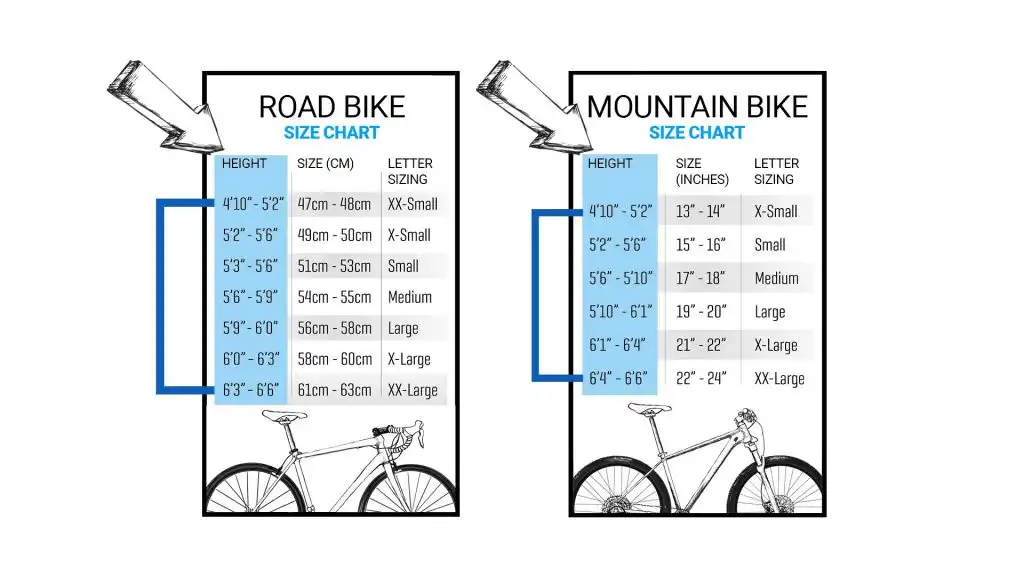When it comes to cycling, comfort is key. Whether you’re commuting, exercising, or riding for leisure, the right bike size can make all the difference in terms of performance, injury prevention, and overall enjoyment. Riding a bike that’s too big or too small can lead to discomfort, muscle strain, and even long-term issues like joint pain or tendonitis. To get the most out of your bike, it’s important to properly size it to fit your body.
In this guide, we’ll walk you through how to properly size a bike for maximum comfort, including tips for adjusting the seat, handlebars, and other key components for a personalized fit.
1. Understanding Bike Frame Size
The frame size is one of the most important factors when it comes to bike comfort. If the frame is too big or too small, it can lead to an uncomfortable ride and poor posture. Frame size is typically measured in centimeters (for road bikes) or inches (for mountain bikes) and refers to the length of the seat tube—the part of the frame that holds the seat post.
How to Measure Your Frame Size:
-
Road bikes: Measure your inseam and multiply it by 0.67 to get an approximate frame size (in cm).
-
Mountain bikes: Frame size is typically based on your height and inseam, but mountain bikes tend to have a more forgiving size range.
Tip: If you’re in between two sizes, it’s generally better to go with the smaller frame size for better maneuverability, especially for mountain biking. For road bikes, the larger frame size often provides more comfort on longer rides.
2. Adjusting Seat Height
The seat height is crucial for comfort, as it affects your pedaling efficiency and your posture while riding. An improperly adjusted seat can cause discomfort in your knees, hips, and lower back.
How to Set the Right Seat Height:
-
The Heel Method: Sit on the saddle and place your heels on the pedals. When your pedals are at their lowest position (6 o’clock), your legs should be fully extended, with just a slight bend in your knee. This means the saddle height is correct for maximum leg extension.
-
The Knee Method: When you place the balls of your feet on the pedals (while riding), your knee should have a slight bend when the pedal is at its lowest position.
Tip: Your saddle should not be too high, as this can cause you to stretch too much, leading to lower back pain. On the other hand, a saddle that’s too low can limit your pedaling efficiency and cause knee strain.
3. Handlebar Position
Your handlebars play a crucial role in your comfort while riding, especially in terms of your upper body posture. If your handlebars are too low or too high, it can lead to neck, shoulder, and wrist discomfort. Adjusting the handlebar height is a simple way to improve comfort, especially for riders who experience back pain or discomfort in their arms.
How to Adjust Handlebar Height:
-
Road bikes: Handlebars should be level with or slightly lower than your saddle for an aerodynamic position. However, for comfort-focused riding, raising the handlebars a bit higher can ease strain on the back and neck.
-
Mountain bikes: Handlebar height is more variable. A higher bar position provides a more upright and comfortable riding posture, which is ideal for beginners or those who ride longer distances.
Tip: When setting the handlebar height, consider your riding style. Road cyclists often prefer a lower handlebar position for speed, while commuters or casual riders may prefer a more upright riding position for comfort.
4. Reach and Top Tube Length
The reach refers to the distance between the saddle and the handlebars, and it affects how stretched out you’ll be while riding. A bike with the right reach will allow you to maintain a comfortable, slightly bent posture without overextending your arms or back.
How to Adjust Reach:
-
Check your posture: When sitting on the bike, your elbows should be slightly bent. If you have to stretch too much to reach the handlebars, the bike may be too large.
-
Adjust the saddle position: If the reach feels too long or short, try adjusting the saddle slightly forward or backward to find a more comfortable position.
-
Handlebar adjustments: In some cases, moving the handlebars closer to or further from you may also improve comfort.
Tip: A professional bike fitting can help adjust your reach precisely if you’re unsure about your ideal setup.
5. Saddle Position and Angle
The position and angle of your saddle can make a huge difference in your comfort while riding. An improperly tilted saddle can cause discomfort in your pelvis or lead to excessive pressure on your knees.
How to Adjust Saddle Position:
-
Saddle tilt: The saddle should be level or have a slight downward tilt. A saddle tilted too far forward or backward can affect your comfort and pedaling efficiency.
-
Saddle fore and aft position: The saddle should be positioned so that your knees are aligned with the pedals. The knee should be slightly bent at the bottom of the pedal stroke.
Tip: Small changes to saddle angle and position can have a big impact on comfort. If you’re unsure, start with a neutral position and make small adjustments as needed.
6. Footwear and Pedal Setup
Your bike shoes and pedals can greatly influence your comfort while riding, as the right shoes provide better pedaling efficiency, and the proper pedals prevent unnecessary foot movement.
How to Choose the Right Pedals and Shoes:
-
Clipless pedals: If you’re using clipless pedals, ensure that the shoes are correctly clipped into the pedals and that the cleats are properly positioned to avoid knee strain.
-
Platform pedals: For casual riders, platform pedals and shoes with a good grip are typically more comfortable for short rides.
Tip: Make sure your bike shoes fit snugly but aren’t too tight. This will help prevent discomfort and foot pain during long rides.
Conclusion
Properly sizing and adjusting your bike is crucial for maximizing comfort, preventing injuries, and ensuring an enjoyable ride. From the frame size to seat height and handlebar position, each element can make a significant difference in how you feel while riding. Whether you’re a seasoned cyclist or a beginner, taking the time to fit your bike to your body will ensure that every ride is smooth, efficient, and, most importantly, comfortable.

